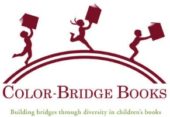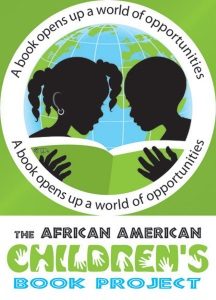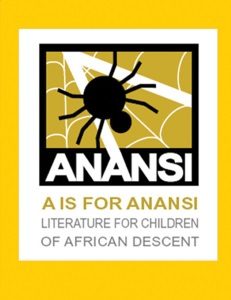Black Creators for Children
The Coretta Scott King Book Awards are part of a profoundly rich history of African American children’s literature.

 The Coretta Scott King Book Awards are part of a profoundly rich history of African American children’s literature. It is a history that stretches back into the nineteenth century through the early-twentieth century Brownies’ Book magazine and the mid-twentieth-century Ebony Jr! publication.
The Coretta Scott King Book Awards are part of a profoundly rich history of African American children’s literature. It is a history that stretches back into the nineteenth century through the early-twentieth century Brownies’ Book magazine and the mid-twentieth-century Ebony Jr! publication.It is a history that encompasses the bibliographies of Negro literature for children (1946–1970s) compiled by the New York Public Library’s Augusta Baker. It includes the Council on Interracial Books for Children, formed in 1965, which recognized the gifts of luminaries such as Mildred D. Taylor, Walter Dean Myers, and Virginia Hamilton. It is a history that includes pioneering writers, illustrators, and a host of others whose names are spoken too infrequently by too few. Or forgotten.
Black Creators for Children, a largely unheralded project born in the early 1970s, was a group composed of people who believed in the power of Black children’s books to positively affect lives. The group has an important, profound relationship to the Coretta Scott King Book Awards in that many of its members went on to win CSK Awards in the ensuing years. To those who follow the CSK, the roster of names will be familiar — foremost among them Tom Feelings, George Ford, Bernette Goldsen Ford, Joyce Hansen, Brenda Wilkinson, Pat Cummings, Wade Hudson, and Cheryl Willis Hudson.
The group was meticulous in articulating and documenting its philosophies, which included suggested criteria for African American book creators as they began to be published by mainstream presses. A mix of the literary and the philosophical, the criteria encompassed: unity, self-determination, collectivity, purpose, creativity, faith, characterization, structure of plot, and language. The following examples are revealing of the range of concerns addressed.
Collectivity: Collective work and responsibility is the building and maintaining of our family and our communities together, making each person’s problems our problems and solving these problems collectively. Individualism and selfishness must be replaced by a sense of collectivity.
Creativity: The writer should be able to adapt historical materials, political concepts, and everyday life and learning experiences so that they are interesting, imaginative, and intelligible to children without being oversimplified.
Characterization: Characters should be well drawn, recognizable, and believable. They should be revealed through what they say, and what others (including the narrator) say about them. They should not be stereotypes (racial or sexual) or mouthpieces for a writer’s message. They must engage the child’s interest, participation, and belief in the realness of the story.
* * *
 The children's newsletter published by Black Creators for Children.
The children's newsletter published by Black Creators for Children.On June 4, 1977, a “Benefit Book Party” was held at the Harlem State Office Building. (One of the purposes of the party was to raise money for WATOTO, a newsletter for children.) The flyer for this event identifies Black Creators for Children as “a workshop of authors, illustrators, editors and educators committed to the publishing of quality books for Black children.” A sheet attached to the flyer reiterates the group’s objectives: “1) To improve overall quality and quantity of literature and the arts for children of African descent, 2) To develop skills and criteria for evaluating and analyzing children’s literature in terms of its ability to stimulate imagination as well as enhance the cognitive and cultural development of the Black child, 3) To refine the technical skills necessary for creating art forms of high quality, 4) To provide a forum and resource center for the exchange of ideas and to facilitate the coordination of talents among writers, illustrators, and all other members of the Black community concerned with literature and the arts for Black children, and 5) To provide a mechanism for the publication and distribution of the work produced.”
 The “noted Black authors and illustrators reading from, exhibiting, and autographing their works for children” at this event included Tom Feelings, Ernest Gregg, Brenda Wilkinson, and George Ford. Ford was the first recipient of the CSK Illustrator Award, in 1974, for Ray Charles, written by Sharon Bell Mathis; Tom Feelings won in 1979 for Something on My Mind, written by Nikki Grimes. It seems clear, even through these few examples, that the mission and criteria of Black Creators for Children were similarly appreciated by the Coretta Scott King Book Awards Juries, whose selections exemplified Black Creators’ stated values.
The “noted Black authors and illustrators reading from, exhibiting, and autographing their works for children” at this event included Tom Feelings, Ernest Gregg, Brenda Wilkinson, and George Ford. Ford was the first recipient of the CSK Illustrator Award, in 1974, for Ray Charles, written by Sharon Bell Mathis; Tom Feelings won in 1979 for Something on My Mind, written by Nikki Grimes. It seems clear, even through these few examples, that the mission and criteria of Black Creators for Children were similarly appreciated by the Coretta Scott King Book Awards Juries, whose selections exemplified Black Creators’ stated values.* * *
In addition to the overlap between Black Creators for Children and the CSK winners, there were others, such as Patricia Hinds, a former editor at Essence magazine and at HarperCollins, whose participation in Black Creators is evidence of the variety of people and organizations who saw the value in Black children’s literature. This kind of interaction is clear in the program for a discussion held on October 16, 1977, that included panelists such as Aduke Aremu, director and playwright of the Harlem Children’s Theatre Company; Toni Brabham, director of children’s entertainment for the Billie Holiday Theatre; Brad Brewer of the Brewery Puppet Troupe; Shirley Miles of the Dance Theatre of Harlem; Nii Ahene-La Mettle-Nunoo of the New Muse Community Museum of Brooklyn; and Mical Whitaker of The Ossie Davis and Ruby Dee Story Hour.
* * *
During a conversation in 2001, Cheryl Willis Hudson reflected:
We covered a lot of ground, which is still being covered today. People are still asking the questions, but personally, I think people involved in [Black Creators] incorporated the criteria into their own work. This was right after a big wave of nationalism and Black power during the 1970s…As a result of momentum in the group, the philosophy spread from those individuals to people they made contact with. I think it is a lasting legacy in terms of people who stay in publishing.
 One member of Black Creators who stayed in publishing is Bernette Ford. She founded Color-Bridge Books and established Cartwheel Books at Scholastic, a pioneering effort in its own right. Rashidah Ismaili, a driving force behind the drafting of the Black Creators criteria, was most recently a founder of the A Is for Anansi Conference at NYU. There is absolutely no question that Black Creators for Children built a lasting, generative legacy.
One member of Black Creators who stayed in publishing is Bernette Ford. She founded Color-Bridge Books and established Cartwheel Books at Scholastic, a pioneering effort in its own right. Rashidah Ismaili, a driving force behind the drafting of the Black Creators criteria, was most recently a founder of the A Is for Anansi Conference at NYU. There is absolutely no question that Black Creators for Children built a lasting, generative legacy. Of course, it’s disappointing that well into the twenty-first century there is still a dearth of publishing outlets for African American children’s literature, but there are some heartening examples. Into the early twenty-first century, the Children’s Defense Fund’s Langston Hughes Library in Clinton, Tennessee, hosted inspiring gatherings for individuals involved in a variety of ways with the creation of African American children’s books. More recently, The Brown Bookshelf, a blog founded by Kelly Starling Lyons and others, functions as a virtual space of public conversation and celebration, while Vanesse Lloyd-Sgambati’s African American Children’s Book Project, held annually in Philadelphia, is a celebratory physical gathering space. There are like-minded efforts ongoing, all part of this amazing history — with the CSK Book Awards, it could be argued, at the center.
Of course, it’s disappointing that well into the twenty-first century there is still a dearth of publishing outlets for African American children’s literature, but there are some heartening examples. Into the early twenty-first century, the Children’s Defense Fund’s Langston Hughes Library in Clinton, Tennessee, hosted inspiring gatherings for individuals involved in a variety of ways with the creation of African American children’s books. More recently, The Brown Bookshelf, a blog founded by Kelly Starling Lyons and others, functions as a virtual space of public conversation and celebration, while Vanesse Lloyd-Sgambati’s African American Children’s Book Project, held annually in Philadelphia, is a celebratory physical gathering space. There are like-minded efforts ongoing, all part of this amazing history — with the CSK Book Awards, it could be argued, at the center.
The history of African American children’s literature has still to be written in its fullness. It is a history that connects The Brownies’ Book to Ebony Jr!. It connects Glenn Thompson’s Black Butterfly Children’s Books and the Hudsons’ Just Us Books. It connects individuals and eras: Elton Fax to Tom Feelings to James Ransome. Joyce Hansen to Jacqueline Woodson, the sixth National Ambassador for Young People’s Literature. It is a history that connects CSK chronicler Henrietta Smith (author of the four editions of The Coretta Scott King Awards Book) to current Librarian of Congress Carla Hayden to the fiftieth-anniversary celebration of the CSK. The future of African American children’s literature unfolds even as we read this special issue of The Horn Book. It is a story of writers, illustrators, librarians, educators, activists, booksellers, readers, review journals, prizing, and more. Black Creators for Children and the Coretta Scott King Book Awards are two essential chapters in this story.
From the May/June 2019 Horn Book Magazine: Special Issue: CSK Book Awards at 50. Find more information about ordering copies of the special issue.


RECOMMENDED
ALREADY A SUBSCRIBER? LOG IN
We are currently offering this content for free. Sign up now to activate your personal profile, where you can save articles for future viewing.







Add Comment :-
Comment Policy:
Comment should not be empty !!!
Ph
Thanks for your note, Dianne. I could not reply because your server returned my message. If you send your email address, I'll forward my message. I trust you enjoyed the conference! Best, phPosted : Jun 25, 2019 05:51
Rebecca Mbuh DeLancey
What a rich heritage! Thank you for the beautiful details for an interesting and educational read!Posted : Jun 18, 2019 08:00
PH
Thank you for reflecting on the wonderful work of the Black Creators for Children and your mention of my involvement within our collective commitment to furthering the beauty of our own image in children's books. I actually never left publishing, as my company, Mignon Communications, has produced wonderful books for children and adults. And in the '90s I created and edited Essence Books for Children, which was a beautiful and pioneering imprint published by Golden Books, a collection that stands to this day as a first major publisher to produce a dedicated line of books for children of color. I am the author of nine children's books, including internationally distributed best sellers What I Want To Be and My Best Friiend. Please see the range of books on my website PatriciaHinds.com (and an older site mignoncommunications.com). I would be happy to show you some of the historical brochures/catalogs of the Essence line. Feel free to be in touch at pmignon@msn.com. Best, Patricia HindsPosted : Jun 13, 2019 01:03
Brad Brewer
I remember the panel. It was not only very interesting but inspirational and informative. I was honored to be a part of it.Posted : Jun 12, 2019 02:28